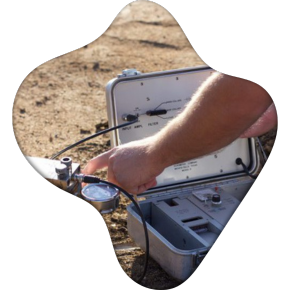

Sonic Fluid Level Measurement: Accurate Downhole Analysis
Determining fluid levels in oil wells is essential for optimizing production and diagnosing performance issues. Sonic fluid level measurement offers a non-intrusive and efficient method for accurately assessing fluid depths downhole.
Sonic fluid levels are obtained by generating a pressure wave that travels down the casing annulus. This is accomplished using:
A special pressure generator (blank .45 caliber or 10-gauge shell)
Inert pressurized gas, usually nitrogen
An acoustic sensing device and chart recorder then capture the return echo of the pressure wave as it bounces back from the fluid surface. The time delay between the wave’s release and its return is used to calculate the fluid level.
For greater precision, additional echoes from tubing collars or other well “jewelry” in the casing/tubing annulus can be used. These known distances help correlate and refine the calculation of the primary fluid echo, resulting in a more accurate determination of the actual fluid level.
Standalone Reports: When conducted independently, our conventional sonic fluid level report includes a summary of findings.
Dynamometer Integration: Sonic testing can be integrated with our Vital Element Test (VET) and Production Efficiency Test (PET) to compare the sonic-measured fluid level with the level calculated using dynamometer data.
By leveraging sonic fluid level measurement, operators gain valuable insights into reservoir conditions, pump performance, and production efficiency. Whether used alone or combined with advanced dyno analysis, this technology provides a powerful tool for optimizing well performance.
For more information on sonic fluid level testing or to explore our full range of well diagnostic services, contact us today!
